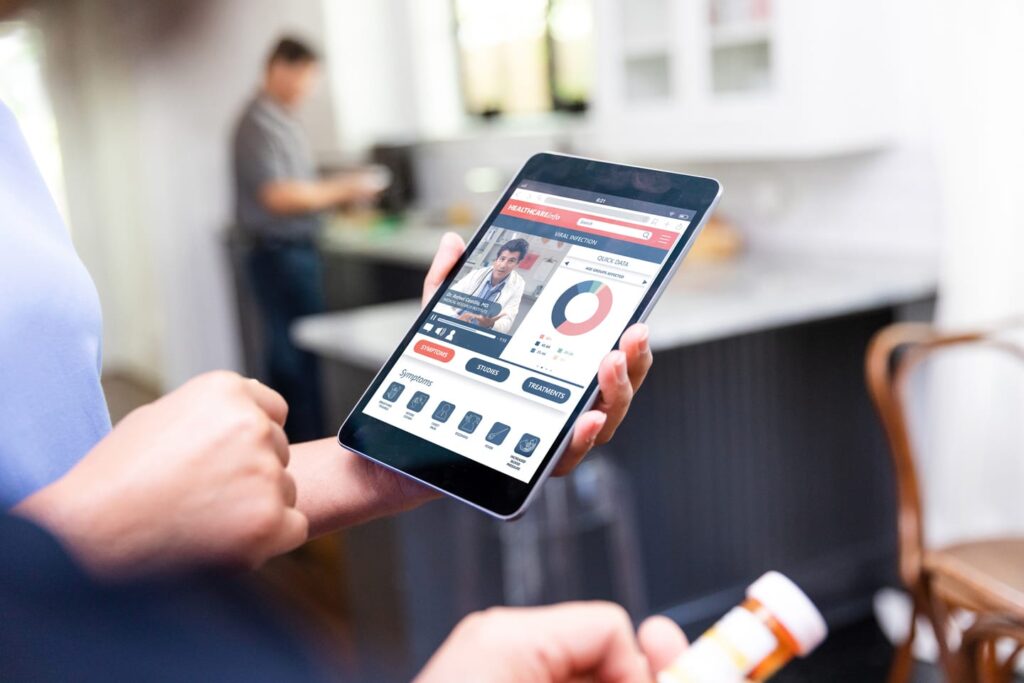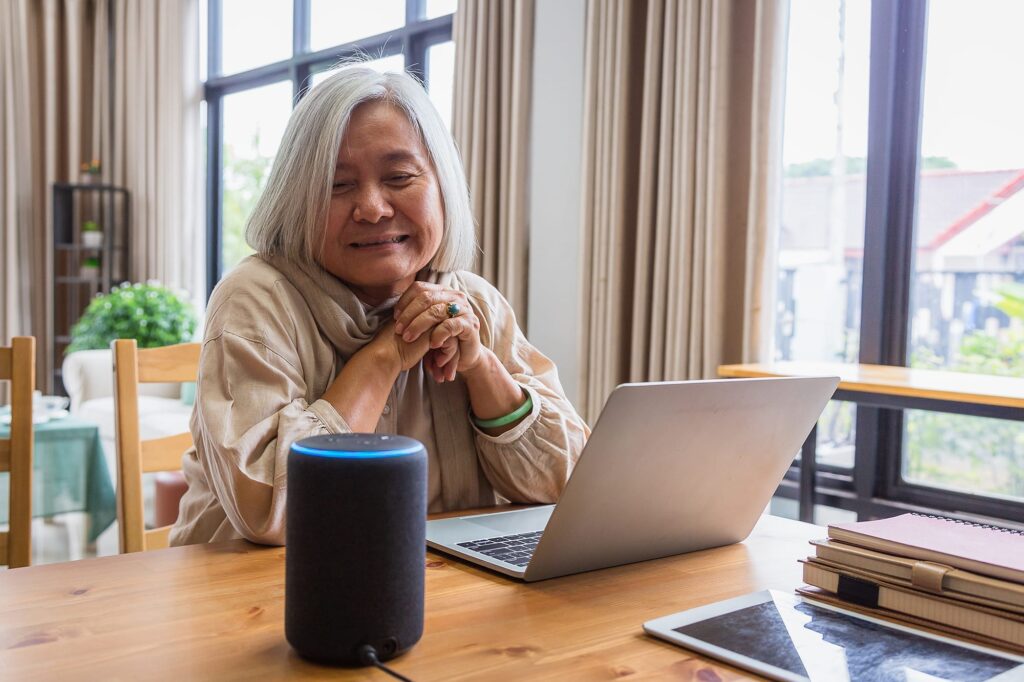
What do today’s consumers want in a healthcare experience? Personal involvement is at the center of it all. That points to an increased role for virtual health—and, with COVID-19 showing how easy and accessible that can be, it’s what many people want now.
There’s been increased discussion in recent years on the topic of consumerism in healthcare. Merriam-Webster offers two definitions of consumerism: 1) the theory that an increasing consumption of goods is economically desirable, and 2) the promotion of the consumer’s interests. But for today’s healthcare consumer, the word has a more specialized meaning.
The Institute for HealthCare Consumerism’s IHC Forum defines healthcare consumerism as “transforming an employer’s health benefit plan into one that puts economic purchasing power—and decision-making—in the hands of participants.” It adds: “This is best achieved by supplying employees with the decision-making information and support tools they need, along with financial incentives, rewards, and other benefits that encourage personal involvement in altering health and health care purchasing behaviors.”
As we are seeing, today’s consumer has indeed become more personally involved.
What Consumers Want in a Healthcare Experience
Healthcare consumers are feeling empowered and seeking more empowerment, weighing their options and freely sharing their opinions. When it comes to their healthcare experience, they now expect more, including:
- Convenience, easy access and flexibility. This means access to health resources, and the ability to meet with doctors, nurses and other care providers at times that suit the consumer’s schedule.
- Personalization. Care should be patient-centered and holistic, taking into account not just the disease or ailment but the whole person as a unique individual with specific needs.
- Engagement. Responsive care includes follow-up that encourages the consumer/patient to take meaningful actions toward improved outcomes.
- Information and transparency. Today’s healthcare consumers seek to be educated about options before, during and after care, including for billing and payment. They expect timely, relevant data to be shared among all those involved in their care. In addition, according to a recent consumer survey from PwC’s Health Research Institute (HRI), “many people are willing to participate in clinical trials or share their personal data to help discover new treatments or ways of delivering care.”
These expectations suggest an increased role for virtual health, which Deloitte defines as “continuous, connected care delivered via digital and telecommunication technologies.” Virtual health, Deloitte says, can drive continuity, connectivity, coordination and care continuum, all in the interest of the consumer’s well-being and care delivery. And it can drive value across five key areas: enhanced care coordination, improved clinical outcome, enhanced consumer experience, improved efficiency, and expanded consumer and clinician access.
Demonstrating the Value
Surveys and interviews of healthcare executives by the Deloitte Center for Health Solutions, in collaboration with the American Telemedicine Association (ATA), in November 2019–January 2020 highlighted the rapidly increasing role of virtual health in the overall healthcare landscape. Refocused investments, data, analytics, interoperability, wearable devices, integration of care delivery, the removal of regulatory and payment obstacles, and more are adding up to “a more tailored, personalized virtual health experience for consumers,” that research concluded.
Lately change has come quickly. A previous Deloitte survey, conducted February–March 2018, found that, while consumers of all ages were using technology in all aspects of their lives, including healthcare, 77% of them had never tried a virtual visit. While millennials were more likely than older adults to use health technology, about half of seniors were just using technology to refill prescriptions.
Then came the coronavirus pandemic, which upended “life as we know it” across just about every aspect of our existence. Since then, the value of virtual care has been amply demonstrated. McKinsey & Company noted the acceleration in telehealth use wrought by the pandemic in a May article, “Telehealth: A Quarter-Trillion-Dollar Post-COVID-19 Reality?” Consumer adoption by then had surged from 11% of U.S. consumers using virtual health technology in 2019 to 46% now using it to replace canceled in-person visits (with 76% interested in using it going forward), while providers had seen 50 to 175 times the number of patients via telehealth than they did before the pandemic.
It’s all part of a larger sea change in the industry that also includes a move toward value-based care and community-based care models. But the McKinsey report’s authors caution: “It will require new ways of working for a broad set of providers, step-change improvements in information exchange, and broadening access and integration of technology. The potential impact is improved convenience and access to care, better patient outcomes, and a more efficient healthcare system. Healthcare players may consider moves now that support such a shift and improve their future position.”
In other words, there are ample opportunities for healthcare providers and systems to establish a competitive advantage―if they stay attuned and responsive to the expectations of today’s healthcare consumers.


About The Author: Medecision
Medecision is a leader in cloud-based, data-powered healthcare solutions, enabling risk-bearing entities to achieve improved health outcomes, optimized medical costs, reduced administrative costs, and personalized engagement. Our Aerial platform supports over 10% of the U.S. population, marking a significant milestone in advancing healthcare efficiency and effectiveness.
More posts by Medecision